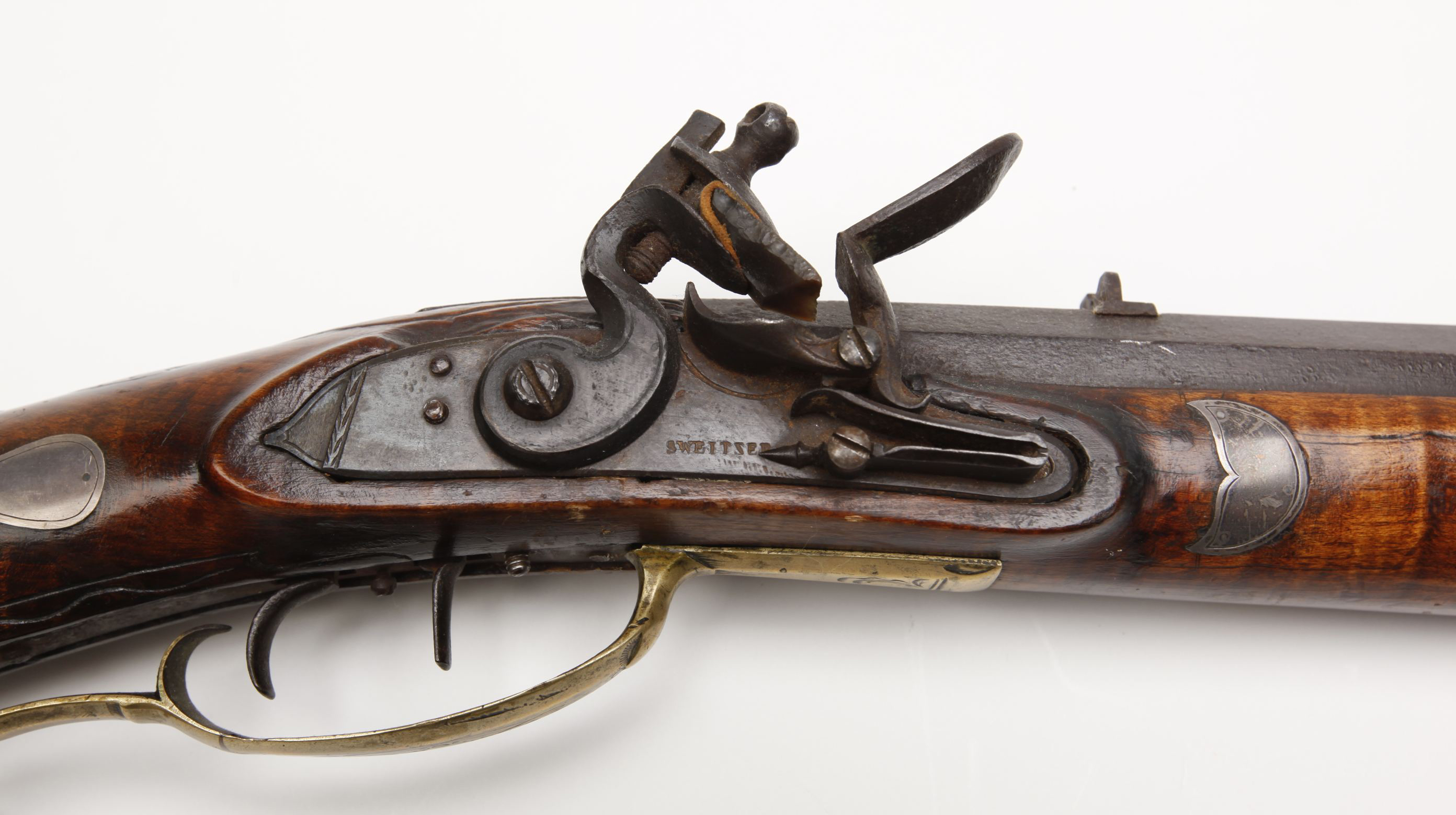Gallery

1 of 1
Brown Bess Flintlock Musket
The Short Land Pattern Brown Bess was the standard British Army musket of the Revolutionary War period. The barrel length of Short Pattern Musket had been reduced to 42 inches, hence its designation, and was standardized for all British services by a Royal Warrant dated June 11, 1768...
Read more here

1 of 1
Melchior Fordney Heavy Barrel Flintlock Rifle
With its rifled barrel, the classic American Long Rifle was capable of much greater accuracy at much greater range than the smoothbore military muskets of the era. This example by Melchoir Fordney also included a heavy barrel and double set triggers to enhance its accuracy potential...
Read more here
Read more here

1 of 1
Remington Percussion Rifle
This muzzleloading arm was converted to percussion ignition by the installation of a bolster percussion cone where the flash pan had been located...
Read more here
Read more here

 More Like This From Around The NRA
More Like This From Around The NRA



